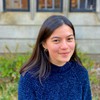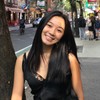Atomic clouds over Hiroshima (L) and Nagasaki (R). Photo by George R. Caron (L) and Charles Levy (R) via Wikimedia Commons.
Next week marks the 75th anniversary of the U.S. bombing of Hiroshima, a time of mourning and remembrance for Japan. But some of the bombings’ victims saw one small, but “full” victory on Wednesday when a Japan court ruled that victims of “black rain” were considered hibakusha, or atomic bomb survivors. They will be granted the same government benefits as other victims, including free health care.Black rain refers to the residual radioactive material that fell from the sky after the United State dropped its first atomic bomb over Hiroshima on August 6, 1945. When mixed with heat and thermal currents, the product dropped as black rain for a half hour after the attack. The radioactive black rain not only touched the victims, but also contaminated local food and water sources.Those exposed to the rain developed different illnesses linked to radiation including cancer and cataracts. A 2018 scientific test found that caesium-137, a radioactive particle, could still be detected on a shirt exposed to black rain over 70 years later, reported the Japan Times. The suit was filed in 2015 by 84 plaintiffs—all of whom are in their late 70s and 90s and victims of black rain, according to the Associated Press. All are from the same region: either Akiota-Town or Saeki Ward in Hiroshima.In 1976, the government established an A-bomb survivor relief measures zone that certified atomic bomb victims. Since that zone was set, many have sought to expand the relief zone, including the plaintiffs of Wednesday’s case. Those who fall outside of the zone can apply for A-bomb disease certification, if they satisfy requirements such as having entered a 2-kilometre radius from the hypocenter of the 1945 bombing. But the Hiroshima Peace Media Center has claimed that applications were too often rejected.When the Japanese court announced their decision, the plaintiffs’ lawyers held up a banner reading, “Full victory,” the AP reported.Though the suit was filed five years ago, the battle has been playing out for much longer.While the victory was worth celebrating, many on social media said that the decision should have not taken as long as it did, pointing out that it took 75 years for war victims to find justice.
Advertisement
Advertisement
“I think the decision they made was way too late. Babies who were born then are now elderly. It should have happened earlier,” one Twitter user said.
“How many years did it take? They really just acknowledged black-rain survivors after the majority of them have passed away. Lawsuits related to war are always resolved very late,” said another.An A-bomb survivor Hitoshi Mukai, 77, keeps 163 brown envelopes with testimony from black rain victims collected by a fellow survivor, Tsuneyuki Murakami, who died in 2011, reported Mainichi. Visiting different communities to hear victims’ stories, he brought his documents to the Japanese government in the 1970s to reveal the rain’s horrific effects.On Wednesday, the courts finally sided with the 84 plaintiffs’ argument, which was backed by medical records detailing their radiation-linked health problems.Masaaki Takano, the chairman of Hiroshima Prefecture Atomic Bomb Black Rain Council, also celebrated the victory. “It has been 40 years since I started actively working to gain recognition for black rain survivors. I am extremely happy with the verdict, and I want to ensure the defendants do not appeal in the future,” he told NHK.At the press conference following the announcement, Takano shared his personal story as a black rain survivor. “I used to live 20km away from where the bombing was. When I was 7, I was in school when a very bright flash shined through the window. On my way home, I was covered in black rain. Since that day, my whole family suffered from severe diarrhea and high fevers,” he said. According to Takano, farms and rivers where people went to collect drinking water, were filled with the residuals. His mother died from stomach cancer in her 50s, and many of his neighbours died young due to this incident.“Everyone knew that it was because of the atomic bombing. However, we all kept silent. Otherwise, we would be discriminated against.”Eighty thousand were instantly killed and five square miles of city completely flattened when the U.S. bombed Hiroshima during World War II. In the days and years to follow, tens of thousands more would die from exposure to radiation. Three days later, the U.S. dropped another bomb on Nagasaki, killing 40,000 on impact. Within the week, Japan surrendered.

